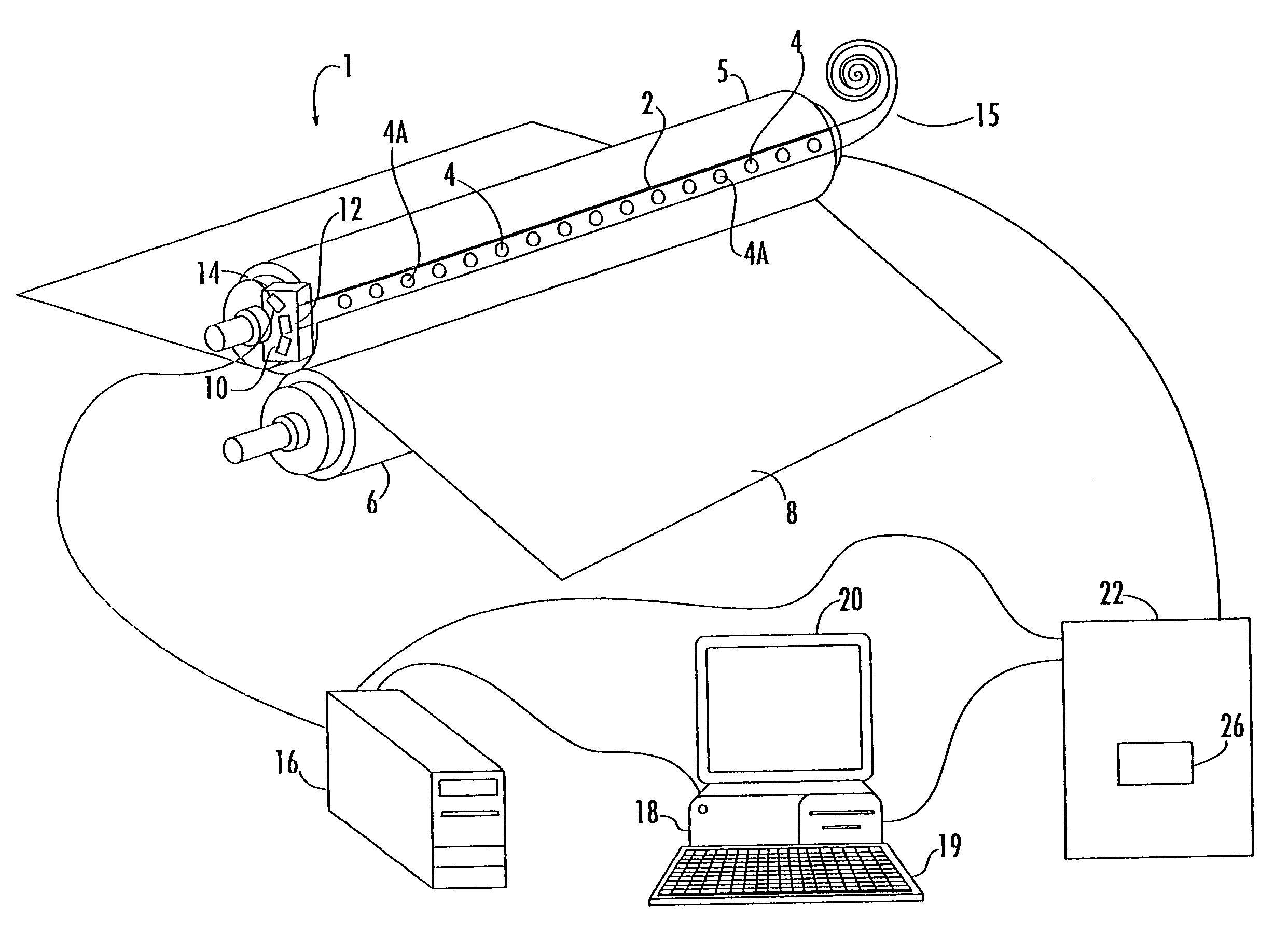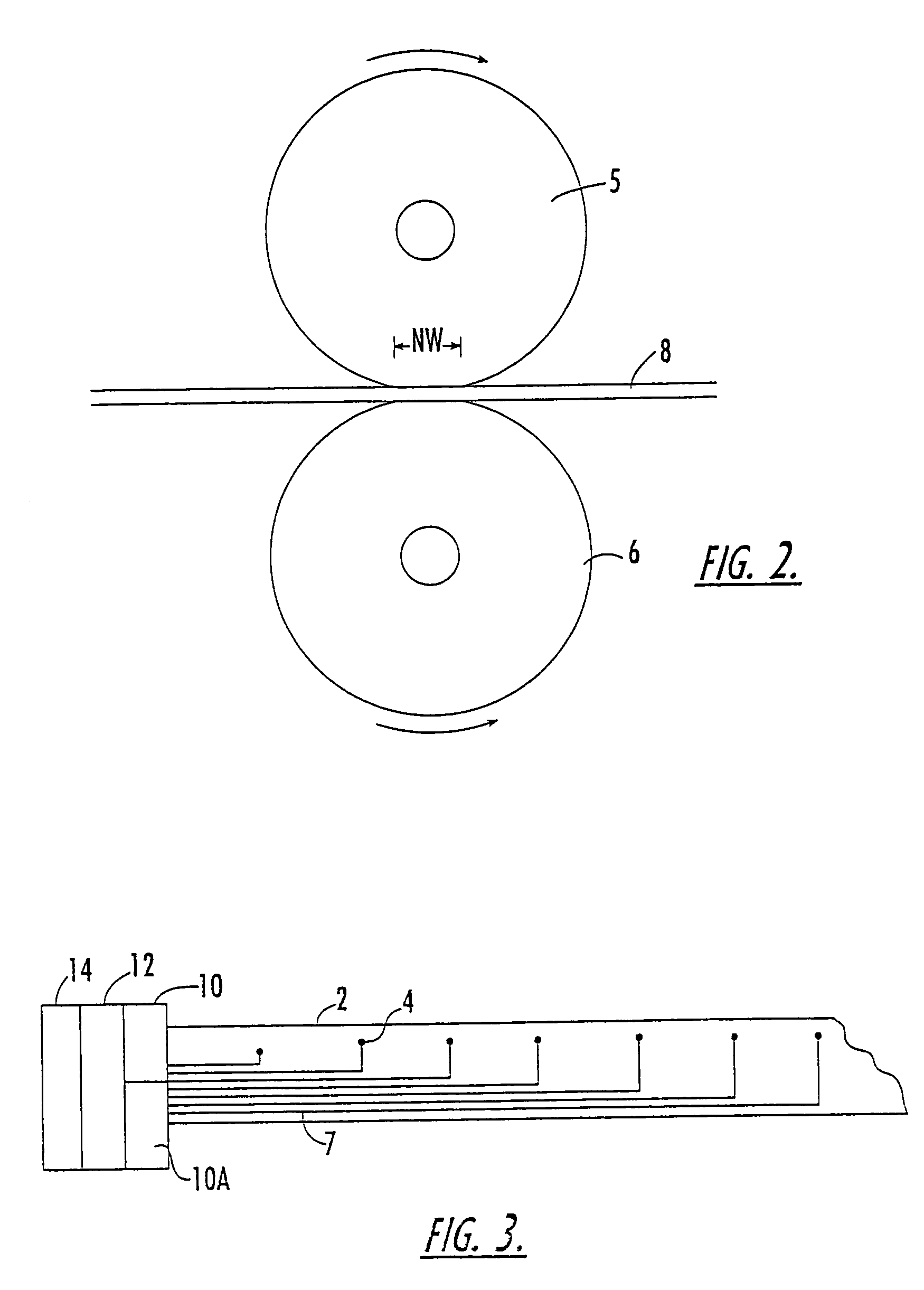Nip width sensing system and method
a technology of width sensing and nip, applied in the direction of instruments, machines/engines, force/torque/work measurement apparatus, etc., can solve the problems of uneven surface characteristics, fiber crushing as well as holes in the resulting paper product,
- Summary
- Abstract
- Description
- Claims
- Application Information
AI Technical Summary
Benefits of technology
Problems solved by technology
Method used
Image
Examples
first embodiment
[0124]With reference to FIGS. 9 and 10, a sensor 30 is shown therein. Sensors 30 of this construction may be used in the sensing system 1 as the sensors 4. The sensor 30 is what is commonly referred to as a force sensitive resistor sensor or FSR sensor. The sensor 30 includes spaced apart electrically conductive, flexible, resilient strips 32 and 34 which may be formed of silver or like material. Lead lines L1 and L2 are connected to the strips 32 and 34, respectively, and to the resistance measuring means. The strips 32 and 34 have layers 32A and 34A of resistive material secured to their opposed faces. The opposed faces of the layers 32A and 34A are separated by an air gap 36 and have substantially complementary, rugged profiles. Examples of suitable FSR sensors include UNIFORCE™ sensors available from Force Imaging Technologies, Inc. of Chicago, Ill.
[0125]The sensor 30 has an effective sensor length SL which is greater than the longest anticipated nip width to be measured. For e...
second embodiment
[0181]Referring now to FIGS. 11 and 12, a sensor 40 is shown therein mounted on the strip 2 (see FIG. 11) as one of the sensors 4. The sensor 40 has an effective sensing length SL extending from the leftmost to the rightmost vertical line 41A and an effective sensing width SW extending from the topmost to the lowermost horizontal line41B. Preferably, the sensor length SL is the same as described with respect to the sensor 30 and the sensor width is greater than the width of any grooves or drill holes in the roll. As in the case of the sensor 30, the sensor 40 employs a force sensitive resistive material. However, in the sensor 40, the force sensitive material is provided in a prescribed, discrete configuration which serves to minimize the effect of variations in nip pressure magnitude, thereby providing a more direct and accurate approximation of the nip width NW.
[0182]FIG. 11 schematically depicts the sensor 40 disposed on the strip 2 and spanning the nip width NW. FIG. 12 is a sc...
PUM
| Property | Measurement | Unit |
|---|---|---|
| thickness | aaaaa | aaaaa |
| length | aaaaa | aaaaa |
| width | aaaaa | aaaaa |
Abstract
Description
Claims
Application Information
 Login to View More
Login to View More - R&D
- Intellectual Property
- Life Sciences
- Materials
- Tech Scout
- Unparalleled Data Quality
- Higher Quality Content
- 60% Fewer Hallucinations
Browse by: Latest US Patents, China's latest patents, Technical Efficacy Thesaurus, Application Domain, Technology Topic, Popular Technical Reports.
© 2025 PatSnap. All rights reserved.Legal|Privacy policy|Modern Slavery Act Transparency Statement|Sitemap|About US| Contact US: help@patsnap.com



